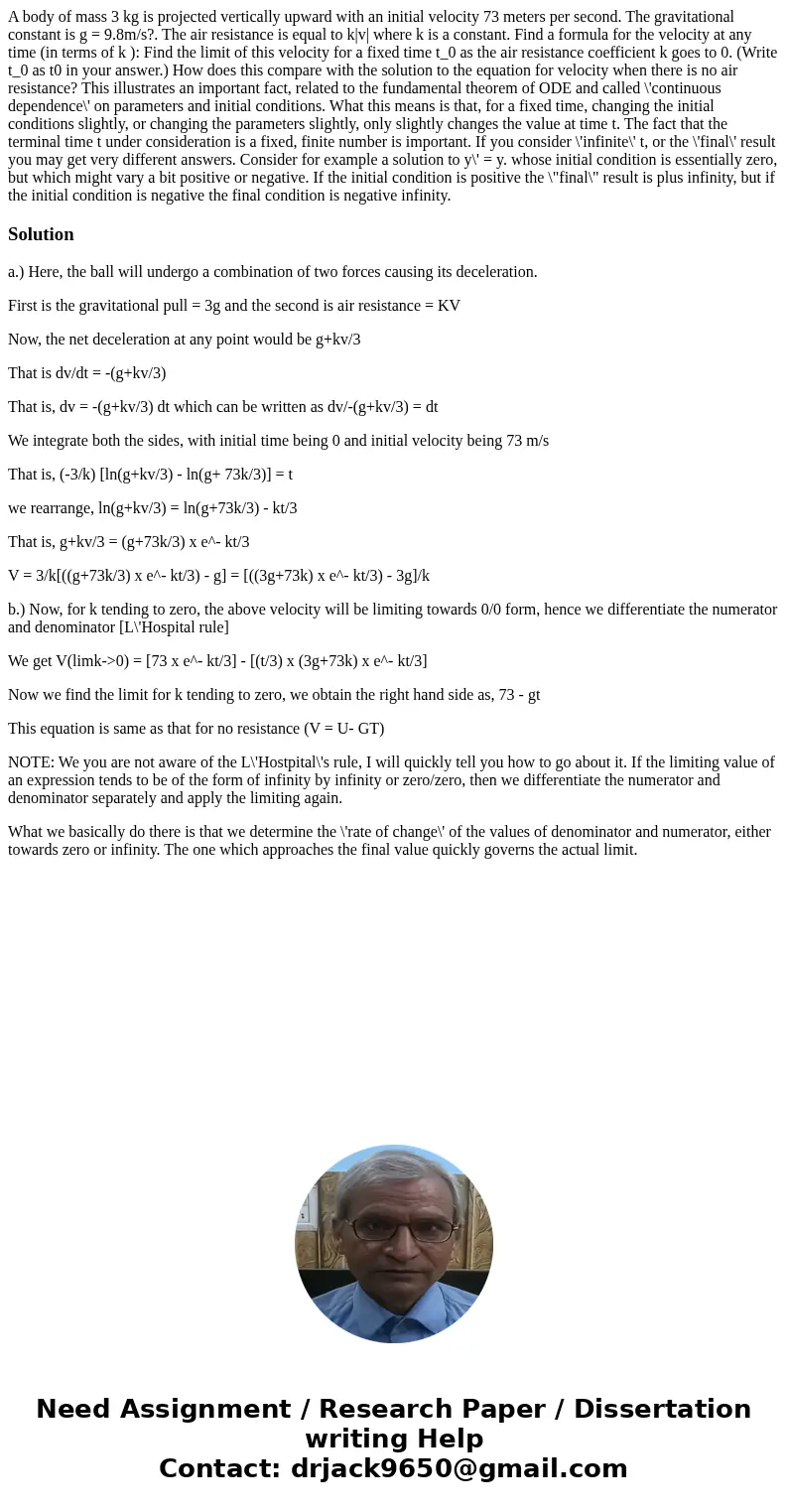A body of mass 3 kg is projected vertically upward with an i
Solution
a.) Here, the ball will undergo a combination of two forces causing its deceleration.
First is the gravitational pull = 3g and the second is air resistance = KV
Now, the net deceleration at any point would be g+kv/3
That is dv/dt = -(g+kv/3)
That is, dv = -(g+kv/3) dt which can be written as dv/-(g+kv/3) = dt
We integrate both the sides, with initial time being 0 and initial velocity being 73 m/s
That is, (-3/k) [ln(g+kv/3) - ln(g+ 73k/3)] = t
we rearrange, ln(g+kv/3) = ln(g+73k/3) - kt/3
That is, g+kv/3 = (g+73k/3) x e^- kt/3
V = 3/k[((g+73k/3) x e^- kt/3) - g] = [((3g+73k) x e^- kt/3) - 3g]/k
b.) Now, for k tending to zero, the above velocity will be limiting towards 0/0 form, hence we differentiate the numerator and denominator [L\'Hospital rule]
We get V(limk->0) = [73 x e^- kt/3] - [(t/3) x (3g+73k) x e^- kt/3]
Now we find the limit for k tending to zero, we obtain the right hand side as, 73 - gt
This equation is same as that for no resistance (V = U- GT)
NOTE: We you are not aware of the L\'Hostpital\'s rule, I will quickly tell you how to go about it. If the limiting value of an expression tends to be of the form of infinity by infinity or zero/zero, then we differentiate the numerator and denominator separately and apply the limiting again.
What we basically do there is that we determine the \'rate of change\' of the values of denominator and numerator, either towards zero or infinity. The one which approaches the final value quickly governs the actual limit.

 Homework Sourse
Homework Sourse